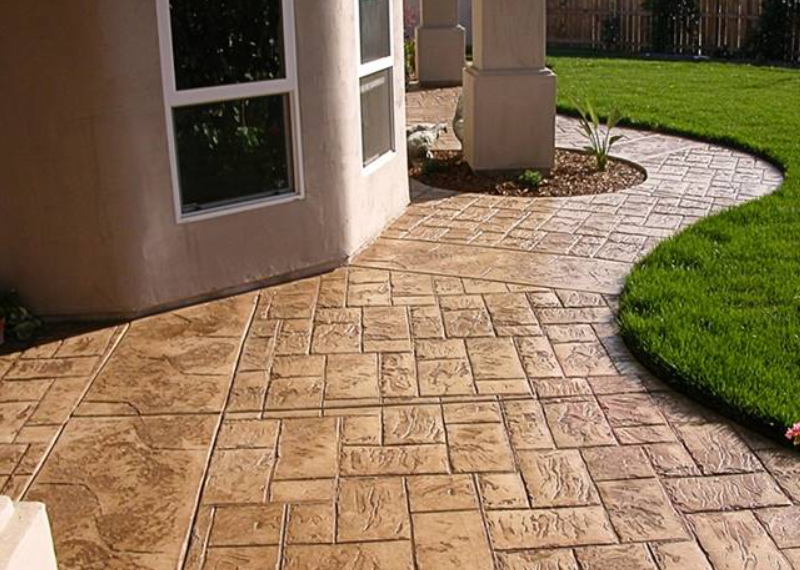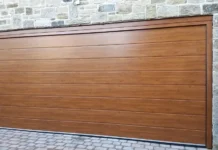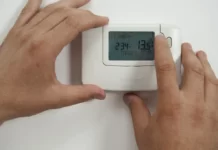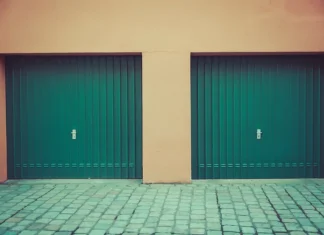Concrete is one of the most common construction materials. It can be varied in composition and finishes to suit different uses. Decorative types like exposed aggregate and stamped concrete are gaining in popularity. The stamped type, in particular, is an affordable way to enhance your home’s visual appeal, as it mimics the look of stone, slate, brick, cobblestones, and even wood without the typical cost.
Homeowners can choose between varying patterns and textures, and pigments are added to achieve interesting colour schemes. The material is increasingly used in driveways, pool decks, pavement, kitchen countertops, retaining walls and patios, garages, basements and shopping centre floors.
Compared to the materials it resembles, stamped concrete is not only cheaper but also more durable. It’s suited to high-traffic areas with low wear, better adjusts to changes in temperature and moisture, and is easy to clean and maintain. With that said, time does take a toll on any material. If you notice changes to the colour or cracks appearing, bringing the surface to its original look is simple. All you need is a stamped concrete sealer.
Why Seal Concrete?
Concrete sealers bring a host of benefits. They block water, oil, dirt and other contaminants from seeping through and degrading the aggregate from the inside. When applied to the surface, they provide an additional layer of durability, by resisting abrasion and wear and stopping the growth of weeds, grass and mould.
They can also enhance surface colour and sheen, and maintain looks for longer. There’s less likelihood of cracks, flaking, stains and fading in well-maintained stamped concrete treated with the right sealer.
Types of Sealers for Stamped Concrete
There are two types of sealers to choose from: film-forming and penetrating. Both will enhance the look of the concrete but are used in slightly different ways depending on how far damage has crept in. Film-forming sealers deal with surface damage while penetrating sealers do a better job in concrete that’s seen better days.
Film Forming
These coat the concrete surface and are thus known as topical sealers. They’re good against spills, dirt and water ingress, easily get rid of stains, and bring back the original colour. Plus, a film-forming sealer is easy to apply. For stamped concrete, you’ll be looking at an acrylic, epoxy or polyurethane stamped concrete sealer. Each brings different benefits.
Acrylic
Acrylic sealers form a thin layer of protection on the surface. They are easy and quick to apply. There are two types: water-based and solvent-based acrylic sealers. Water-based acrylic can be used on both existing or new and uncured concrete and provides either a matte or gloss finish. It helps prevent water absorption, staining and abrasion and resists mould, mildew and algae.
In addition, it is UV-resistant so holds its ground against the hot Aussie sun, is non-yellowing, doesn’t fade and is breathable. In concrete that has faded badly, acrylics can be combined with tints to bring back the original colours. They last 2 to 3 years on average, before the stamped concrete needs resealing.
Solvent-based acrylic sealers are generally applied to existing surfaces where they work wonders in providing a high gloss finish. Consisting of smaller particles, these penetrate slightly deeper into the surface. This lends them higher chemical and abrasion resistance, ideal in areas with high traffic frequency.
There are a few shortcomings though. Besides being more expensive, the downsides are that it needs more attention when it is applied due to some solvent acrylics having high rates of volatile organic compounds (VOCs) and the solvent evaporates in hotter weather.
Epoxy
These are usually reserved for commercial and industrial settings and driveways as they’re more durable and have a higher viscosity than acrylics. They can better contain chemicals, such as oil, and have higher impact resistance. They come in either a gloss or matte look (depending on the additives used) and can be coloured to match the look of the concrete. An epoxy concrete sealer can last up to five years in driveways and surfaces that are well-maintained.
Polyurethanes
Polyurethane sealers are twice as thick as acrylics and can be used both in indoor and outdoor applications. They’re hard-wearing, provide a gloss finish, and are particularly good against chemicals and abrasion. They too can be water or solvent-based, depending on where they’re applied.
Penetrating
These penetrate deeper into the concrete, filling cracks and fissures that have formed over time. The sealer reacts chemically with the concrete and solidifies the substrate into a solid mass. Penetrating sealers work best against water ingress, so are ideal for rainy and humid areas, while still letting water vapour inside escape.
Additionally, these sealers have the highest UV protection and help prevent staining and yellowing. Use a penetrating sealer to regain the natural look of stamped concrete. They have a matte finish and last the longest, generally up to 10 years.
Choosing Right
Your choice will depend on the look you’re after, the current condition of the concrete, the level of protection, and how long you want the sealer to last. In addition, where you live plays a part, as different sealers perform differently in hot and humid areas. Acrylics are popular because they are low-cost, easy to apply and fast-curing. They are also breathable so no trapped moisture or air can cause further damage.
Of course, durability and protection are important and epoxy and polyurethanes perform better and last longer. If you want to keep a natural appearance to the concrete, especially in places with very high traffic (think shopping malls and warehouses), then opt for a long-lasting penetrating variant.
There are dozens of decent brand-name sealers to choose from. Go with a stamped concrete sealer that gets the look you want and is easy to use. Sealer is sold in varying quantities, but as a guideline, a 20-litre bucket will be enough for the typical Aussie driveway.
Application
First off, ensure that the surface is clean and dry. This allows for better adhesion. The sealer is safe to apply after the concrete has fully cured (generally four weeks after pouring), or on existing surfaces. This requires basic tools, such as low-pressure sprayers or rollers, which can be used interchangeably to disperse the sealer in an even thickness.
Be sure not to apply too thick coats, especially with acrylics to prevent puddling. Usually, two thin coats will deliver the best results. To keep the surface in good condition and for long after it’s sealed, ensure that you clean it regularly, removing dirt and debris, and any spills or stains. Also, avoid using chemicals or cleaning solutions when removing stubborn stains.












